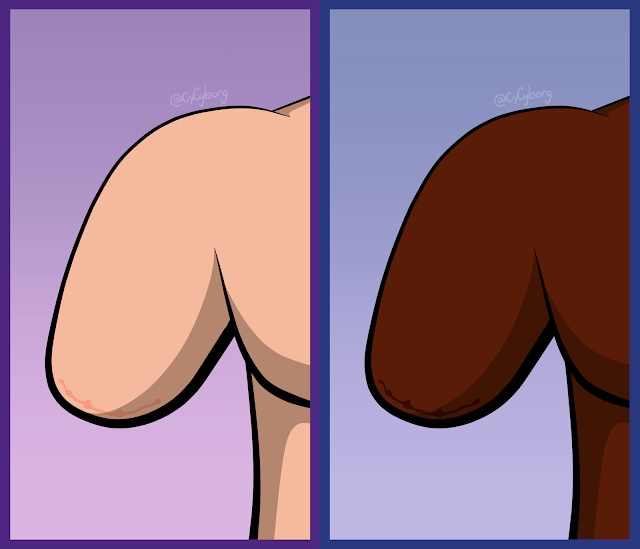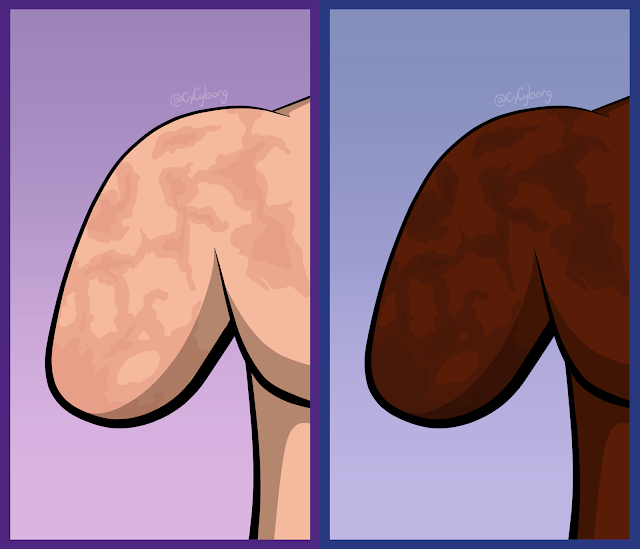writing and drawing amputee characters: Stump Scarring
This was something I had originally intended to mention in this post but felt it deserved its own separate post.
A lot of people, when drawing and designing amputee characters, draw their characters with these big, gnarly looking scars all over the stump. I get why people do this, but in reality, most amputees have stumps that look more like this:
The only scarring that is inherent to amputation (meaning most amputees have) is a very thin line right at the tip of the stump that comes from where the stump was sewn shut. After 5-10 years though, these thin incision scars will fade to be nearly invisible in most folks other than the indent it usually leaves in the skin.
Of course, there are exceptions! My own legs are covered in heavy scarring like the pictures below.
but typically, you only see this in amputees who lost their limb in ways that required them to also need skin grafts, such as from a burn (fire or acid), gangrene, some types of rapid-onset sepsis, or particularly brutal animal attacks.
For context, I used scars from meningococcal as reference here.
I think this is another reason a lot of people, particularly in 2D comics and animation, cover their amputee character's stumps, because they think all amputees have scars like the ones in the second image and I'll be honest, that's a lot to draw when you're drawing it over and over again, but unless your amputee also needed skin grafts because of their injury/illness, their stumps will look more like the first images.
Fun fact: on particularly pale skin, scars can change colour depending on temperature. scars have less circulation and the blood vessels are closer to the skin, which means if you don't have a lot of melanin, your scars can turn a grey-ish purple colour like so:

[ID: A single image, this time of just the white stump with the large burn-like scars. This time, they are a slightly grey-ish purple tone. /End ID]
This information is brought to you by an especially pasty white person in the southern hemisphere (where it's winter as of writing this) who's scars haven't seen the sun since june lmao.
A quick final note: If you look up "burn scars" or any other similar type of large scarring on google a lot of what you get are fresh scars, so they're going to look different than the ones here. On pale skin, large scars like the ones above start out very dark red and will fade to look more like the images here. The same is true for dark skin, typically fresh scars will be much darker in colouration and will fade to be closer to the natural skin tone with time, though on both, they will always be very visible. Some types of scarring on darker skin tones can cause the skin to become lighter, but they don't usually turn entirely light pink like I've seen some folks draw. This is why it's so important to look up references of the type of scar your character has AND how that looks on their skin tone.
And as always, listen to POC and seek out the resources specifically made by them if you're drawing characters with darker skin tones. Their lived experience will always beat my "what I found through internet research and from talking to friends"


Comments